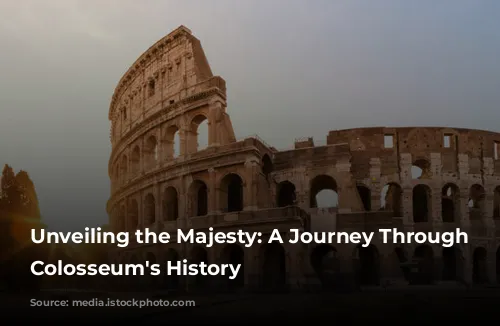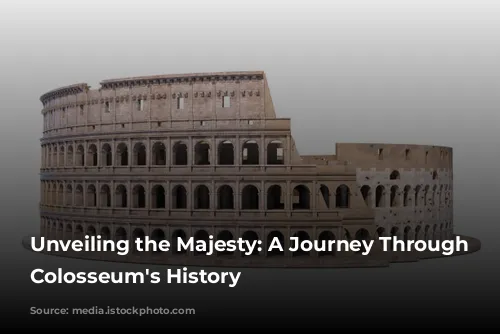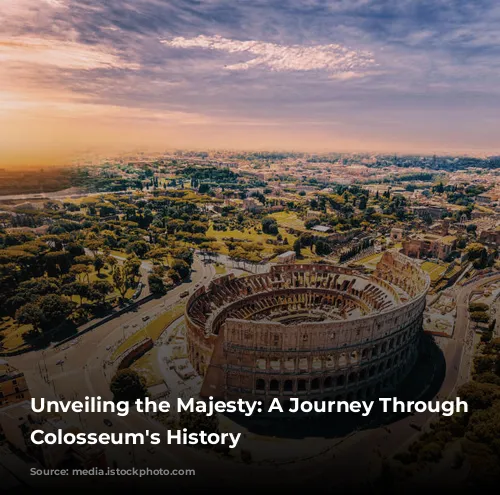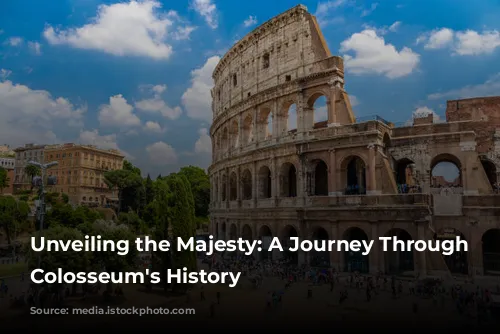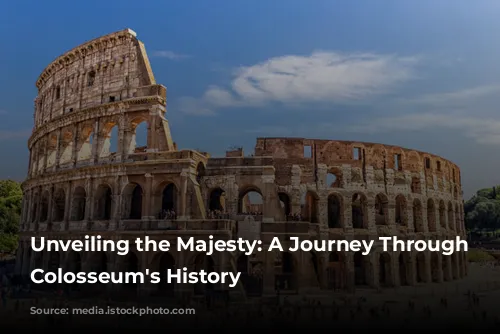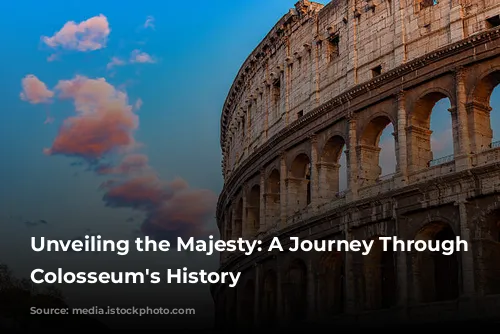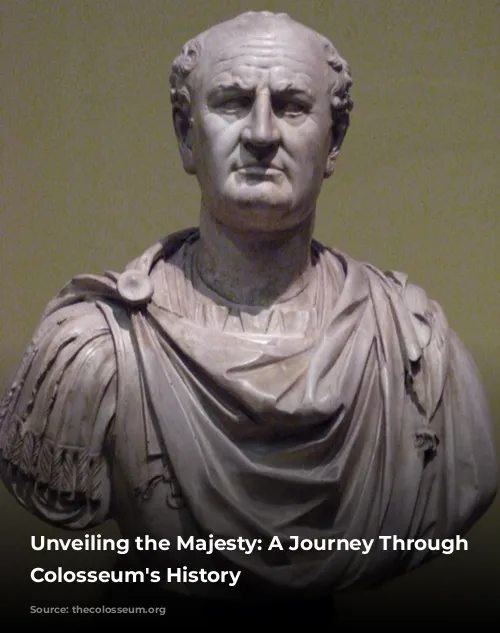The Colosseum, a titan of ancient Rome, stands as a testament to the grandeur and brutality of a bygone era. This iconic amphitheater, built nearly two millennia ago, has witnessed a kaleidoscope of events, from thrilling gladiator battles to gruesome executions and spectacular hunts. Join us as we delve into the Colosseum’s captivating history, uncovering fascinating facts and stories that will leave you in awe of this architectural marvel.

A Monument to Power: The Colosseum’s Genesis
Imagine a world where the roar of the crowd and the clash of steel were the daily soundtrack of life. The Colosseum, built in the heart of Rome, was a stage for these thrilling spectacles, drawing thousands of spectators to witness the raw power and drama of ancient Roman entertainment.
When Did This Giant Rise?
Construction of the Colosseum, initially called the Flavian Amphitheater, commenced in 72 AD during the reign of Emperor Vespasian. It was completed in 80 AD, a testament to the Roman Empire’s engineering prowess and the sheer ambition of its rulers. Emperor Titus, Vespasian’s son, oversaw the project’s completion, cementing his legacy in Roman history.
A Labor of Many Hands
The Colosseum’s construction was a massive undertaking, demanding a colossal workforce. The Jewish people, captured after the First Jewish-Roman War, were forced into slavery and many were tasked with building this architectural masterpiece. Estimates suggest between 60,000 and 100,000 individuals contributed to its construction, a chilling reminder of the brutal realities of ancient Rome.
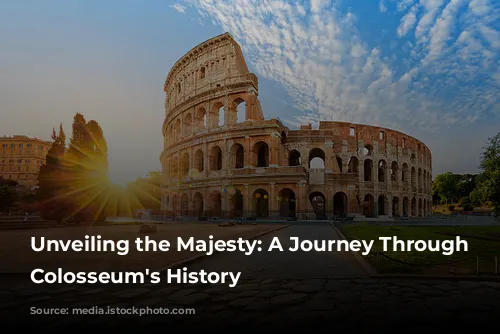
The Colosseum: A Symbol of Roman Might
The Colosseum’s construction was a calculated move by Emperor Vespasian. He sought to win over the Roman populace after the tumultuous reign of Emperor Nero, who had alienated the citizens by building a luxurious palace in their city. By demolishing Nero’s Domus Aurea and replacing it with a grand amphitheater, Vespasian aimed to provide a place of entertainment and unity for all Romans.
A Name With History
The name “Colosseum” likely originated from a colossal bronze statue of Emperor Nero, which stood near the amphitheater, itself modelled on the Colossus of Rhodes. This majestic statue was a reminder of Nero’s power, yet it became a symbol of Vespasian’s triumph.
A Monumental Design
The Colosseum is an oval-shaped structure, measuring 189 meters long, 156 meters wide, and 48.5 meters tall, covering a remarkable 6 acres. Its towering walls are adorned with three levels of Doric, Ionic, and Corinthian columns, each level featuring 80 arches. These arches served as a practical guide for spectators, ensuring they could easily find their seats. The Colosseum’s sheer size and intricate design are a testament to the architectural mastery of the ancient Romans.
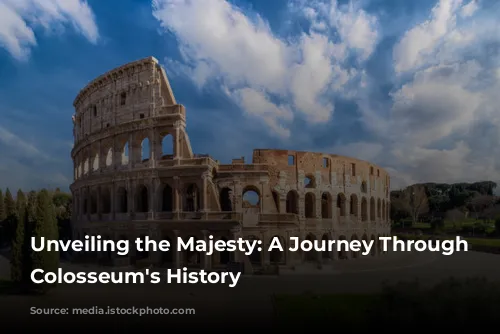
Beneath the Surface: The Secrets of the Colosseum
The Colosseum is more than just its grand façade. Beneath the arena, an intricate network of tunnels and chambers known as the Hypogeum lies hidden. This underground labyrinth was the heart of the Colosseum’s operations, serving as a holding area for gladiators, animals, and prisoners awaiting their fate.
The Hypogeum’s Function
The Hypogeum was a complex system of passageways and chambers, connected by 80 vertical shafts that provided access to the arena. These shafts were used to bring up gladiators and animals during spectacles, while ingenious trap doors facilitated the deployment of scenery elements, enhancing the visual impact of the events.
A City Beneath the Arena
This elaborate underground system transformed the Colosseum into a self-contained city, where the machinery of entertainment was meticulously managed. The Hypogeum offers a glimpse into the hidden mechanics of the arena, revealing the sophisticated organization required to stage these grand spectacles.
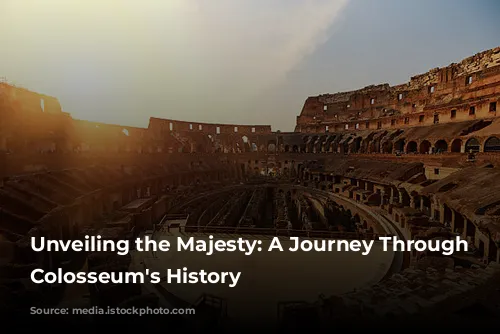
The Colosseum: A Stage for Blood and Spectacle
The Colosseum was more than just a building; it was a stage for the spectacle of ancient Rome. Its massive arena witnessed a range of events, from thrilling gladiatorial combats to captivating hunts and brutal executions.
A Seat for Thousands
The Colosseum’s seating capacity was a staggering 50,000 to 80,000 spectators, a testament to the immense popularity of these events. The crowd’s roar, the clang of swords, and the screams of the vanquished echoed through the arena, creating an electrifying atmosphere that captivated the Roman populace.
A Death Toll Untold
While we cannot know the exact number, historians estimate that as many as 400,000 people, including gladiators, slaves, convicts, prisoners, and other entertainers, perished in the Colosseum’s arena during its 350 years of operation. This grim statistic highlights the dark side of the Roman Empire’s entertainment.
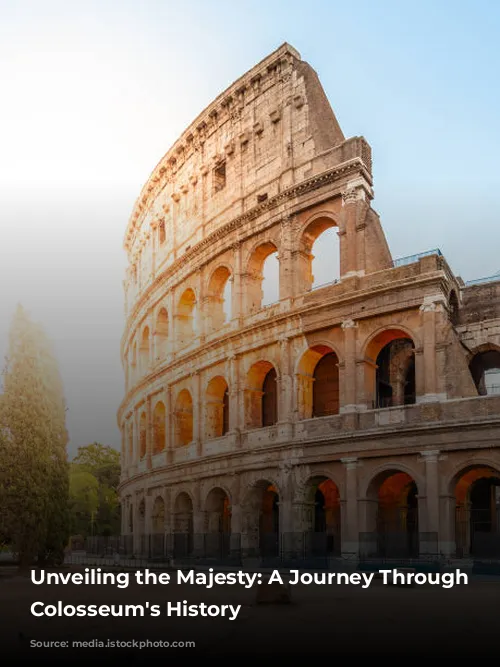
A World of Wild Beasts: The Colosseum’s Menagerie
The Colosseum was not just a place for human combat, but also a stage for staged hunts, pitting humans against fierce wild animals. Lions, tigers, wolves, bears, leopards, wild boar, elephants, hyenas, buffalo, hippopotami, crocodiles, and giraffes all graced the arena at some point, captivating the crowd with their ferocity and grandeur.
A Bloodbath of Millions
While the exact number remains unknown, historical accounts suggest that millions of animals met their demise in the Colosseum’s arena. The sheer scale of these hunts raises questions about the impact on the environment and the animal populations surrounding Rome.
Beyond the Arena: The Colosseum’s Legacy
The Colosseum is more than just a relic of the past; it is a living testament to the enduring power of ancient Rome. Its history continues to captivate the imagination, leaving us with a sense of wonder and awe at its grandeur.
A Tourist Destination
Today, the Colosseum remains a major tourist attraction, drawing over 7 million visitors annually. These visitors, from all corners of the world, are drawn to the Colosseum’s timeless appeal, seeking to connect with the echoes of ancient Rome.
The Colosseum stands as a symbol of a bygone era, a place where power, spectacle, and brutality intertwined. Its stories, etched into the stone of its walls, remind us of the captivating history of ancient Rome and the profound impact it has had on our world.
